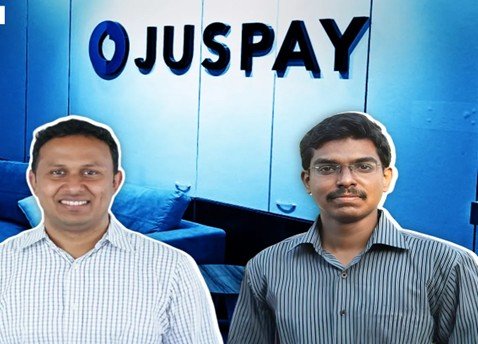Juspay: The Architects of the Invisible From Orchestration to Unicorn


Chapter 1: The Inflection Point
The air in Juspay’s Bengaluru headquarters in late 2024 felt heavy, thick with the silence that follows seismic change. For years, Juspay had been the invisible engine of India’s digital commerce, the elegant, high-reliability layer ensuring that transactions for giants like Amazon, Google, and Microsoft never failed. They were the premier Payment Orchestrator, the central nervous system routing billions of dollars seamlessly.
But the ground had shifted. Major payment aggregators, seeking tighter control over their merchant relationships, had started to disengage from orchestration platforms. It was a strategic challenge—a move that questioned whether Juspay was truly essential infrastructure or a dispensable middle layer.
Co-founder and CEO Vimal Kumar, however, saw not a threat, but the ultimate validation of their core belief: complexity needed a single, elegant solution. “Our mission was never just about routing,” he told the team in January 2025. “It’s about making payments an accessible, open utility, like the internet itself. If they want to control the gateway, we will build the highway and the operating system that runs every vehicle on it.”
The goal wasn’t just survival; it was acceleration. The target: Unicorn status by the end of Q1 2025, fueled by an uncompromising strategy: global expansion, regulatory mastery, and total technological dominance driven by AI.
Chapter 2: The Two Pillars of Scale
Juspay’s counter-strategy focused on two audacious bets: the global deployment of Hyperswitch and the integration of the Nexus AI layer.
Hyperswitch: The Open-Source Global Play Hyperswitch, Juspay’s open-source payment switch, became the spearhead of their international push. Vimal, along with co-founder Ramanathan RV, believed that in an increasingly fragmented global payments landscape, the market craved an open, transparent, and developer-friendly solution. Hyperswitch wasn’t just a product; it was a manifesto for interoperability.
This open-source philosophy resonated immediately with fintech startups and legacy banks outside of India, particularly in complex regions like Southeast Asia and Latin America. By offering a customizable, no-code engine that could connect to any payment processor, currency, or local method, Juspay transformed from a niche Indian solution into a global infrastructure provider.
Nexus AI: The Intelligence of 99.999% Internally, the team introduced Nexus AI, an advanced machine learning engine designed to optimize every millisecond of a transaction lifecycle. It moved beyond simple rules-based routing. Nexus AI leveraged real-time issuer health data, historical consumer behaviour, and even contextual data (like time of day or device type) to predict the highest probability route for success.
The results were transformative. Merchants using the enhanced orchestration platform reported a 5-10% improvement in transaction success rates—a massive gain for businesses processing millions of transactions daily. This uplift in conversion, coupled with the system’s legendary “five nines” (99.999%) reliability, proved Juspay’s infrastructure wasn’t a choice; it was a competitive necessity for any enterprise focused on revenue retention.
Chapter 3: Mastering the Ecosystem
The regulatory piece fell into place perfectly, validating their domestic resilience. In early 2025, after months of rigorous audits and technical reviews, Juspay received the coveted Payment Aggregator (PA) license from the Reserve Bank of India. This license fundamentally changed their game, allowing them to offer end-to-end payment acceptance, directly competing in the full-stack space while maintaining their orchestration layer superiority.
This pivot wasn’t without its challenges. Sheetal Lalwani, Co-founder and COO, was instrumental in steering the compliance and global expansion efforts. Her team deftly managed the simultaneous expansion across APAC, the UK, and North America, ensuring the platform adhered to dozens of disparate regulatory frameworks, from PCI DSS 4.0 standards to local data residency laws.
The market took note of their tenacity. Juspay had not only absorbed the loss of major partners but had used the moment to strategically upgrade their offering, transforming a business challenge into an unprecedented growth engine. The sheer volume was staggering: they were consistently processing over 200 million transactions daily, representing an Annual Total Processed Volume (TPV) of over $900 billion.
Chapter 4: April 7th, 2025: The Leap
The whispers started in March, but the confirmation arrived on April 7, 2025.
Private Equity powerhouse Kedaara Capital stepped in to lead the Series D funding round, joined by existing believers SoftBank and Accel. The round secured a substantial injection of capital—$60 million—but the number that truly mattered was the valuation.
The successful fundraise valued Juspay at over $1 billion, officially crowning them India’s first fintech unicorn of 2025.
The news wasn’t just a victory for the founders; it was a powerful statement about the resilience of core infrastructure technology. Juspay hadn’t built a consumer app or a flashy frontend; they had built the complex, robust plumbing that made everyone else’s flash work.
Vimal, addressing the company after the announcement, kept the focus forward: “This valuation is a checkpoint, not a destination. Our true value lies in the billions of successful transactions we enable, the revenue we recover for our merchants, and the open ecosystem we are creating globally. We skipped the ‘Gazelle’ phase and went straight to Unicorn because we never stopped building the future of payments. Now, we use this capital to accelerate the development of HyperCredit, embed lending capabilities, and make our AI layer truly sentient.”
Juspay’s journey to the unicorn club in 2025 wasn’t a sprint but a marathon won by a deep commitment to first-principles engineering. They proved that in the chaotic world of digital finance, the greatest scale comes not from chasing trends, but from building the unshakeable foundation beneath them. They are the architects of the invisible, ensuring that the magic of digital commerce happens every single time.